Homepage / News Details
Water treatment agent and sustainable development
Recommend
- Categroy:News
- Author:
- Origin:
- Release Time:2019-11-01 15:22
- Views:
【Summary】It includes industrial, urban and environmental chemicals used to treat water, including cooling water, boiler water, air conditioning water, drinking water, sewage and process water including water f
Water treatment agent and sustainable development
Recommend
【Summary】It includes industrial, urban and environmental chemicals used to treat water, including cooling water, boiler water, air conditioning water, drinking water, sewage and process water including water f
- Categroy:News
- Author:
- Origin:
- Release Time:2019-11-01 15:22
- Views:

2.1 Main content and development history of water treatment agent
Water treatment chemicals also known as water treatment agents.
It includes industrial, urban and environmental chemicals used to treat water, including cooling water, boiler water, air conditioning water, drinking water, sewage and process water including water for oil recovery.
Chemical treatment is to use chemical agents to eliminate and prevent scaling, corrosion, bacteria and algae breeding and water purification treatment technology.
It USES coagulants to remove mechanical impurities in raw water, scale inhibitors to prevent the formation of scale 2, corrosion inhibitors to inhibit corrosion, bactericides to prevent the growth of harmful microorganisms, cleaning agents to remove rust residue, old scale, oil, etc.
Circulating cooling water treatment technology in foreign countries began to develop in the early 1930s.
There are 200 water treatment agent production plants in China with more than 100 varieties, with an annual total output of about 200,000 tons and an annual output value of about 1 billion yuan.
2.2 Water treatment agent and sustainable development
To save water, we must first catch the industrial water that is used intensively.
Among industrial water, cooling water accounts for the largest proportion, accounting for about 60%-70%. Therefore, saving cooling water has become the most urgent task for industrial water conservation.
After the cooling water is recycled, the water consumption is greatly saved. However, as the cooling water evaporates continuously, the salt in the water is concentrated, and the cooling water is in contact with the atmosphere. The dissolved oxygen and bacteria content is greatly increased, resulting in serious scaling, corrosion and bacterial algae breeding in the circulating cooling water. The exchange rate is greatly reduced, the maintenance is frequent, and the production is threatened. To this end, it is necessary to add a scale inhibitor, a corrosion inhibitor, a bactericidal algaecide, and a cleaning agent, a pre-filming agent, a dispersing agent, an antifoaming agent, a flocculating agent, and the like in the cooling water. This set of techniques for adding chemical agents to prevent scaling, corrosion, and bacterial growth of circulating water is called chemical water treatment technology. It includes pretreatment, cleaning, pickling, pre-filming, normal dosing, and sterilization. The use of coagulants and flocculants in primary treatment in wastewater treatment is also an important means of recycling wastewater. Chemical water treatment technology is currently the most widely used and effective means of industrial water saving.
Releate News

Time of issue : 2024-05-08 13:15:35

Time of issue : 2024-04-29 13:33:08

Time of issue : 2024-04-22 08:56:03
CONTACT US
PRODUCTS
CALCIUM HYPOCHLORITE
TCCA
SDIC
BCDMH
FEEDBACK
© 1999-2018 北京网站建设有限公司 Copyright © 2012-2022 All Rights Reserved Powered by www.300.cn 冀ICP备12012949号 津公网安备 12010302002173号 Seo tag

